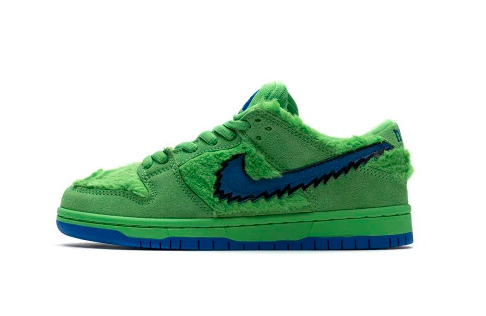There are two sorts of SB Dunk sneakers in the world: those that closely resemble the appearance of the original version of the shoe that made its debut in 1985 and those with performance enhancements made specifically for skateboarding and distributed under the Nike SB banner. Although they are both unmistakably Dunks at first appearance, they are considerably more dissimilar than you may have imagined.
What fundamental distinctions exist between the Replica SB Dunk shoes for men and the “normal” Dunk, then? Why is the tongue of one shoe narrow while the other has “big” shoelaces? And why on earth would anybody want to skate in a worn-out pair of basketball shoes? In this thorough explanation of the SB Dunk Sneakers, we’ll address all of these queries and more.
The number of SB Dunk Sneakers is unknown.
Let’s begin by pointing out that there are more than two SB Dunk Sneakers models before we get into the meat of our Dunk overview. There are five different types of Dunks, if you want to be specific: A mid-top variant that is exclusive to the Nike SB brand, as well as high and low-top variations of the SB Dunk and “normal” Dunk. There were high and low variants of the original Dunk released in 1985. This takes us to our next subject of conversation: the Dunk’s historical background.
Origins
In 1985, the SB Dunk Sneakers were first made available. Nike created the Dunk with college basketball in mind when Michael Jordan, a star rookie, made waves in 1985 sporting the strikingly identical Air Jordan 1. Both helped the product’s targeted customers and Nike’s burgeoning basketball program succeed. In 1985, there were several different hues of the Dunk to pick from, much like the Jordan 1. The “Be True to Your School” set of seven Dunk colors was developed for Nike-sponsored institutions in Kentucky, Michigan, Syracuse, Iowa, St. John’s, UNLV, and Arizona. When athletes from these schools rocked the court during some of the biggest games of the mid-80s, the first set of Dunks gained notoriety.
Contextual Years
As quickly as the Dunk rose through the collegiate basketball rankings, so did its death as a performance basketball shoe. Within a few years of its debut, footwear’s cutting-edge technology rendered the idea virtually obsolete. The Dunk may have lost its appeal to basketball players, but skateboarders, a distinct sports group, quickly adopted it. Why? It’s simple. A skater has never come across a shoe with a sticky surface, a padded ankle collar, and a leather structure that couldn’t be skated to within an inch of its life. But the style didn’t fully develop into a skate shoe until the introduction of Nike SB in 2002.
Beginnings of Nike SB
Nike SB was formally introduced as a skateboarding-specific brand in 2002. Nike SB enlisted Supreme and other underground skate shops to create their interpretation of the new SB Dunk to market it as such and gain traction in the skate scene. There wasn’t a hotter sneaker on the globe from around 2002 until 2007 or 2008 than the SB Dunk. The “normal” non-SB Dunk was still in production, mostly in Japan as part of the region-specific “Concept Japan” series, and was typically in low-top shape.
Focusing on Details
Let’s recap. You are aware of the historical background of the dunk, the “Be True to Your School” pack from 1985, and the factors that caused skateboarding culture to quickly adopt the concept when basketball players did not. Examining the minor design components of both the SB Dunk and the “regular” Dunk is the next step. We’ll compare the SB Dunk Sneakers Low “Chicago” with the Nike Dunk Low “Syracuse.” In each of the comparative images below, the standard Dunk will be shown first, followed by the men’s Replica SB Dunk shoe.

